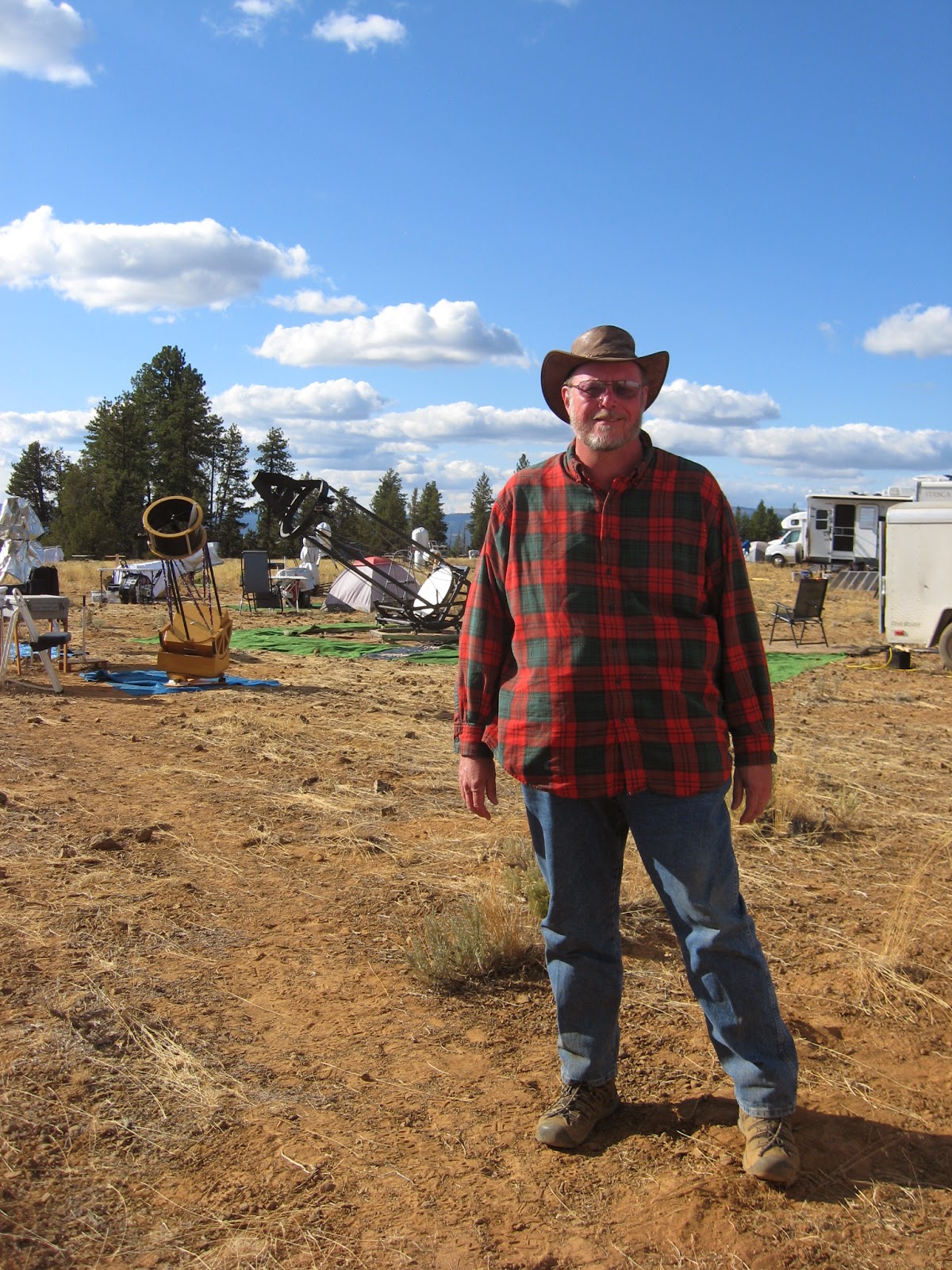Wednesday, September 3, 2014
Dell Venue 8 Pro Review
Over the summer I purchased a Dell Venue 8 Pro tablet. This is a $200-$220 8-inch tablet that runs full Windows. It is small, thin, and lightweight. I carried it with me on my travels, including campouts, my family vacation and ultimately to the Oregon Star Party, where I used Powerpoint and ran a SkyTools demo on it. It runs SkyTools 3 quite well and, with ASCOM, it will control most any telescope. In fact, there was a gentleman at the OSP using one to drive his 40-inch Dob. He had it attached to the base of the telescope itself, and it was working quite well for him.
It is possible to connect to the telescope via a USB connection, but using a Bluetooth-to-serial adapter may be an even better option, assuming it works (I have not tried this personally).
As others have reported, the Windows touch interface allows SkyTools to work mostly as it would using a mouse (with a few exceptions, such as mousing-over objects on the screen). I must say it's pretty cool to have such easy access to SkyTools in the field.
On the downside, the screen is very small and the video driver does not currently allow you to enlarge the fonts by more than 25%. You need to look pretty closely at it in order to see what is going on, and those with failing vision may find it difficult. In that case, one may wish to go to the larger 11" version. It also can't handle a very heavy load, so it is best to keep your observing lists short, particularly with Real Time, which will keep things rolling along nicely.
It seems clear to me now that this is the future for SkyTools in the field. When it comes to supporting many different mounts, and advanced features, telescope control via ASCOM is difficult to beat, and it runs on Windows. Windows will continue to improve in terms of integrating the touch interface, and there are new processors on the horizon that will be smaller, more powerful, and run longer on a small battery. We may even see some of these things emerge in the coming months. For my part, I am working to make ST4 more compatible with the touch interface, without sacrificing any of the unique capabilities of the mouse.
Thursday, August 28, 2014
The Imaging Project and the Oregon Star Party
I was recently invited to be a speaker at the 2014 Oregon Star Party. The story of how this came about began last April. I was thinking about the new astro-imaging features that I was adding to SkyTools 4; things like support of image mosaics, generating scripts for automated telescopes, and some sort of image logging. I had in mind about a half-dozen separate features and I wasn't sure how to put them all together.
So there I was, idly pondering the differences between visual observing and imaging. Visual observing is relatively simple to plan: figure out when the best view is going to be and go look. Unless you are doing a detailed sketch, looking doesn't take all that long. But imaging can entail long exposures in multiple filters and even include different positions in the sky for a mosaic. Imaging an object is less like a casual rendezvous, and more like a project. That's when it occurred to me: visually we simply observe celestial objects, but when doing imaging, we should be observing projects.
This idea of an imaging project was like a revelation. I could see how all the imaging features that I wanted to add to SkyTools 4 could all come together. In fact, I could use this idea to create an observing system for imaging rather than simply present a set of disparate tools.
I was excited to say the least. Ideas that bring everything together don't come along every day. On that same day, I was contacted by Mark Martin of the Rose City Astronomers, asking if I would be interested in speaking at the Oregon Star Party. My first answer was that I didn't have anything to talk about, but when he persisted, my excitement about the imaging project idea got the better of me and I accepted his invitation to talk about it. After all, it was April and the OSP wasn't until late August. I had plenty of time to figure it all out.
First I had things I needed to finish that I didn't want to leave half done. Then summer came along and I found myself spending a week in Texas at a scout camp with my boys, and soon after there was a family vacation. Before I knew it, the OSP was only a month away and I had nothing. Absolutely nothing! Not only was there no code to demo, but I hadn't even figured out the details.
After the panic wore off a bit, I got down to work. I went at it for long hours, seven days a week. I also had to prepare a talk, so I combined my work on the overall software design with developing the notes for my presentation. Doing so was odd, but in fact it worked quite well. I chose one part of the new code to focus all my efforts on so I could demo it, redesigning and coming up with new ideas as I went along. In concert, I worked the ongoing story into my presentation. In the end the talk was probably a bit too ambitious, but overall it seemed to go ok.
I really enjoyed being at the Star Party and meeting lots of new people, although it was rather painful to be there under such beautiful dark skies without my telescope. Fortunately I did mooch some great views, including an unforgettable view of M51 in a 40-inch Dob.
Subscribe to:
Posts (Atom)

